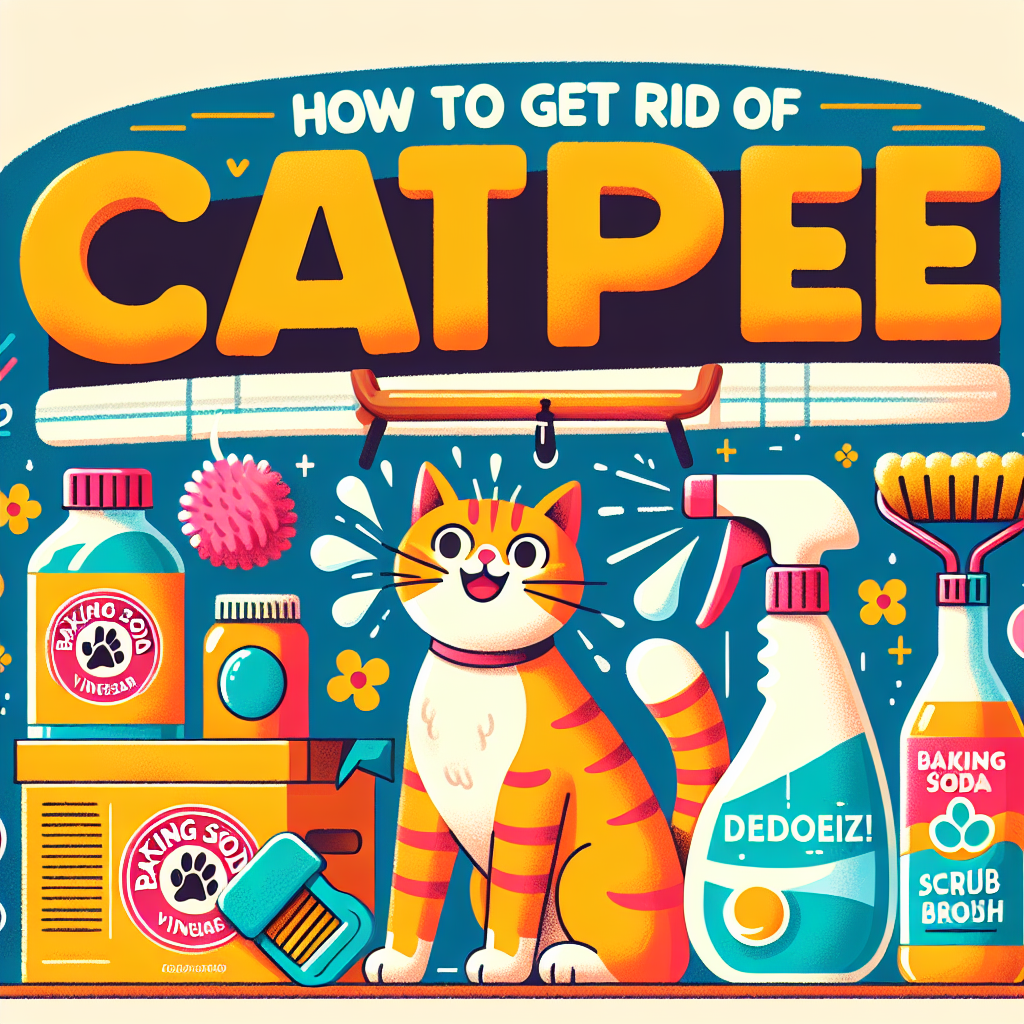Whether you’re a seasoned cat owner or have recently welcomed a feline friend into your home, dealing with cat pee smell can be one of the more challenging aspects of cat ownership. The distinctive odor of cat urine is notoriously persistent and can be challenging to eliminate without the right approach. Fortunately, there are effective methods and products available to neutralize and eradicate those unpleasant smells. This article will guide you through the best practices for removing cat pee odor from various surfaces in your home.
Understanding Cat Urine
Before we delve into the solutions, it’s important to understand why cat urine has such a strong smell. Cat pee contains compounds such as ammonia and other aromatic compounds that can linger long after the urine has dried. More importantly, if you’re attempting to clean up the mess after your cat has peed, merely using soap and water often isn’t enough. The proteins in the urine can attract your cat back to the same spot if not thoroughly cleaned.
Step-by-Step Guide to Eliminate Cat Pee Smell
1. Act Quickly
Time is of the essence when it comes to removing cat pee smell. The sooner you clean it up, the easier it will be to eliminate the odor. If the urine is still fresh, use paper towels or an absorbent cloth to blot up as much of the liquid as possible. Avoid rubbing, as that can spread the urine further into the fabric or carpet fibers.
2. Use Enzyme Cleaners
Enzyme-based cleaners are specifically designed to break down the proteins and compounds in cat urine that cause the strong smell. These cleaners can be found at pet stores or online. Look for products that specifically mention their suitability for pet urine. Here’s how to use them:
- Soak the Area: Apply the enzyme cleaner liberally to the affected area, ensuring it penetrates deep into the surface.
- Let it Sit: Follow the product instructions for how long to let the cleaner sit. It usually ranges from 10 to 30 minutes.
- Blot Dry: After the waiting period, blot the area with a clean cloth to remove excess moisture.
3. Natural Remedies
If you prefer natural solutions, there are several options you can try:
-
Baking Soda: After cleaning the area, sprinkle baking soda over it. Baking soda is a natural deodorizer that can absorb lingering smells. Leave it on for several hours or overnight before vacuuming it up.
-
Vinegar Solution: Mix equal parts white vinegar and water. Spray or pour the mixture onto the area and let it sit for about 5-10 minutes. The vinegar smell dissipates quickly and can help neutralize the ammonia odor.
- Hydrogen Peroxide: For tough stains, a mix of hydrogen peroxide, water, and dish soap can be effective. Be cautious, as it may bleach some fabrics. Test it on a small area first.
4. Clean Your Cat’s Litter Box
Sometimes, the smell of cat pee can emanate from a poorly maintained litter box. Ensure that you are:
- Scooping Daily: Remove clumps of waste and soiled litter daily.
- Changing Litter Regularly: Completely change the litter at least once a week.
- Cleaning the Box: Wash the litter box with soap and water regularly. You can use vinegar to help deodorize it.
5. Use Odor Neutralizers
In addition to cleaning, consider using commercial pet odor neutralizers that contain specific ingredients designed to encapsulate and eliminate smells. Look for products that are non-toxic and safe for pets.
6. Check for Hidden Spots
Cats can sometimes pee in hidden areas such as behind furniture or under appliances. Use a blacklight to locate dried urine spots, as the urine will fluoresce under UV light. Once found, treat them promptly with your chosen cleaning method.
7. Professional Cleaning
If the odor persists despite your best efforts, it may be necessary to hire professional carpet or upholstery cleaners. They often have specialized equipment and cleaning solutions that can effectively remove deep-set odors.
Preventing Future Accidents
To prevent future issues with cat pee, ensure your cat’s litter box is appealing. Here are some tips:
- Provide Multiple Boxes: If you have several cats, the rule of thumb is to have one litter box per cat plus one extra.
- Choose the Right Litter: Experiment with different types of litter to find one your cat prefers.
- Consider Behavioral Issues: If your cat consistently avoids the litter box, consult with a veterinarian. Medical or behavioral issues could be reasons for the accidents.
Conclusion
Dealing with cat pee smell doesn’t have to be an overwhelming challenge. By acting quickly, using the right cleaning solutions, and maintaining good litter box hygiene, you can effectively eliminate odors and keep your home smelling fresh. Remember, the key to preventing future accidents lies in understanding your cat’s needs and behaviors. Happy cleaning!





